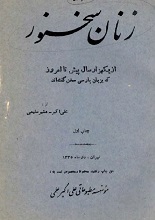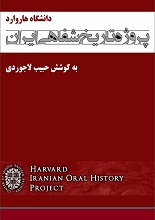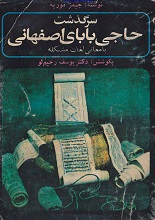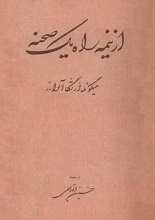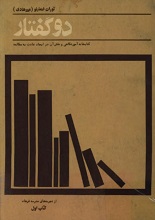The study of ancient Mesopotamia has always fascinated historians, archaeologists, and philologists. Among the civilizations that flourished in this cradle of human culture, the Babylonians played a central role in shaping early law, religion, and administrative systems. The book Babylonian Inscriptions in the Collection of James B. Nies, Volume I: Letters and Contracts from Erech Written in the Neo-Babylonian Period, authored by Clarence Elwood Keiser and published by Yale University Press in 1918, represents one of the most important scholarly contributions to the study of Babylonian texts and inscriptions.
This book is more than just a catalog of ancient cuneiform writings. It is a carefully curated edition of 177 tablets that belonged to the private collection of Rev. Dr. James B. Nies of Brooklyn, New York, who was both a collector and a patron of Assyriological studies. These inscriptions, written in the Neo-Babylonian period (625–539 BCE) and early Persian period (539–522 BCE), provide unparalleled insights into the administrative, economic, and social life of the Babylonians. They include letters, legal documents, and temple administrative records, most of which were excavated from Erech (Uruk), one of the most important cities of Mesopotamia.
From the perspective of SEO and digital readership, this book can be described as a cornerstone resource in Assyriology. Readers searching for topics such as Neo-Babylonian contracts, Babylonian legal history, letters from Erech, temple records of Uruk, James B. Nies collection, or Yale Babylonian texts will find this volume highly relevant. It has long served as a scholarly reference and continues to be cited in modern academic studies.
The Neo-Babylonian Period: A Critical Historical Stage
To understand the value of this book, it is important to place it within its historical context. The Neo-Babylonian period (625–539 BCE) marks one of the final and most brilliant phases of Mesopotamian civilization. This was the era of Nabopolassar, Nebuchadnezzar II, Amel-Marduk, Neriglissar, Nabonidus, Cyrus the Great, and Cambyses—rulers whose political and military actions shaped the ancient Near East.
During this time, Babylon reached new heights in architecture, law, and administration. The construction of monumental structures such as the Ishtar Gate and the restoration of temples across Mesopotamia testified to the city’s wealth and influence. But beyond these monumental achievements, the daily workings of society—contracts, letters, and records—offer us the most authentic glimpse into how ordinary life functioned under Babylonian rule.
It is exactly these kinds of records that the Nies collection preserves. The tablets published in this book contain references to:
- Temple economy – records of offerings, grain deliveries, and provisions for deities.
- Financial transactions – loans, repayments, silver transfers, and grain accounting.
- Legal contracts – agreements over property, inheritance, and obligations.
- Personal letters – correspondence between officials, priests, and citizens, often dealing with practical matters such as supplies, loans, or temple administration.
These inscriptions are not only historical artifacts but also primary legal documents, shedding light on the development of law and commerce in Mesopotamia.
Why This Book Matters for Modern Readers
In today’s age of digital humanities, when ancient texts are being cataloged, scanned, and shared online, the value of early scholarly editions like Keiser’s work becomes even more evident. This volume provides:
- Authentic transcriptions and autographs of cuneiform tablets, allowing philologists to study the original script.
- Name indices that help researchers trace the use of Babylonian personal names, deities, temples, and places.
- Detailed commentary on how these documents fit into the broader historical and administrative context of the period.
For students, researchers, and enthusiasts of Mesopotamian studies, this book remains a goldmine of primary sources. Its careful organization ensures that even more than a century after its publication, it continues to be useful for the study of cuneiform writing and Babylonian society.
About the Collection and the Contents of the Book
The Babylonian Inscriptions in the Collection of James B. Nies, Volume I owes its existence to the vision and passion of James B. Nies, an American clergyman and collector of antiquities. Nies dedicated much of his life to acquiring, preserving, and promoting the study of ancient Near Eastern artifacts. His private collection, based in Brooklyn, New York, included cylinders, vases, seals, copper and bronze objects, and above all, clay tablets inscribed with cuneiform texts.
What makes his collection stand out is its breadth and diversity. It contained materials spanning nearly every major era of Mesopotamian history, from the Archaic period to the Seleucid era. However, the heart of the collection lies in the Ur III Dynasty tablets, along with rich documentation from the First Babylonian Dynasty, Neo-Babylonian period, and Persian administration.
For this particular volume, Clarence E. Keiser focused on 177 texts drawn primarily from Erech (Uruk), with a few tablets from Babylon, Kar-dNana, and nearby towns. These tablets fall into three main categories:
Letters (Nos. 1–94)
- Most of these are short communications, often written by officials to other temple or administrative figures.
- They cover a wide variety of subjects: requests for supplies, instructions for managing resources, and reminders about duties.
- For instance, Letter No. 67 requests that wine be sent for sacrifices to Shamash, the sun god, while Letter No. 77 asks that wool be given to a messenger.
Legal Documents (Nos. 95, 97–130, 133)
- These represent the most formal side of Babylonian administration, dealing with matters such as property, loans, silver transactions, and contracts.
- A particularly interesting example is Document No. 71, which deals with the cancellation of a loan after payment. This shows the sophisticated system of accountability and record-keeping that characterized Babylonian law.
Temple Administrative Records (Nos. 96, 131, 132, 134–177)
- These documents highlight the economic and religious role of temples in Babylonian society.
- They provide records of grain shipments, resource management, and even the branding of temple servants called siraqu.
- For example, Text No. 120 notes that these servants were branded with a star-shaped mark, a unique cultural practice that reflects both religious symbolism and administrative control.
Structure of the Book
Keiser arranged the book in a highly scholarly way, designed to serve both Assyriologists and students:
-
Introductory Remarks (pp. 7–10)
These provide context about the provenance of the tablets, the historical reigns represented, and the scope of the collection. -
Name Indices (pp. 11–36)
This section is invaluable for researchers. It includes masculine names, feminine names, scribes, deities, temples, places, canals, and gates. For anyone studying Babylonian onomastics or prosopography, these indices are essential tools. -
Catalogue (pp. 37–…)
Here the tablets are systematically listed, described, and referenced. -
Autographed Texts (Plates I–LX)
Perhaps the most visually striking part of the volume, these plates reproduce the tablets in hand-drawn facsimiles, allowing readers to see the actual cuneiform signs. These “autographs” were standard in early 20th-century Assyriology, before widespread photography and digital imaging.
Unique Features of the Inscriptions
Several aspects of these texts stand out:
-
Administrative Life: The letters show the day-to-day running of temples and cities, emphasizing the reliance on correspondence for efficient governance.
-
Economic Activity: Silver loans, grain deliveries, and property contracts reveal the economic backbone of the Neo-Babylonian world.
-
Religious Practices: References to sacrifices, temple servants, and ritual obligations demonstrate how deeply intertwined religion and economy were.
-
Historical Range: While most texts date to the reigns of Nabopolassar through Cambyses, some belong to earlier Assyrian rulers like Shamash-shum-ukin and Kandalanu, broadening the historical significance of the collection.
The Scholarly Importance of the Nies Collection
By publishing this volume, Keiser not only preserved the texts but also made them accessible to the academic world. The work was part of the Yale Oriental Series, a prestigious platform that has long been central to the study of the ancient Near East.
For researchers in Assyriology, legal history, philology, and comparative religion, this book provides a direct window into Babylonian society. Modern scholars continue to cite these texts when studying topics such as:
- Temple economy and administration in Uruk.
- Neo-Babylonian legal formulas and contractual obligations.
- The paleography of late Babylonian cuneiform.
- Social structures, including the hierarchy of temple officials like the satammu, bel-piqitti, and qipu.
The Nies collection is thus more than a private archive; it is a bridge between the ancient world and modern historical inquiry.
Download Babylonian Inscriptions PDF
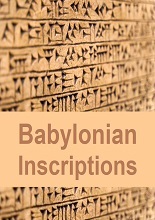
برای دانلود این کتاب، ابتدا باید عضو سایت بشوید.
پس از عضویت، لینک دانلود این کتاب و همهی کتابهای سایت برای شما فعال میشوند.
(قبلا عضو شدهاید؟ وارد شوید)






